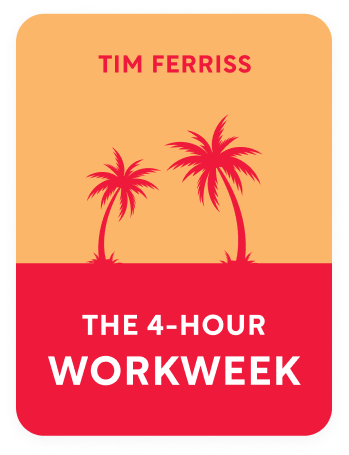

This article is an excerpt from the Shortform book guide to "The 4-Hour Workweek" by Tim Ferriss. Shortform has the world's best summaries and analyses of books you should be reading.
Like this article? Sign up for a free trial here .
What are the types of interruptions? How do you manage each of these types?
There are three types of interruptions that waste time: phone, email, and in-person interruptions. There are ways to manage each one.
Keep reading to learn about the three types of interruptions and how to handle them.
Types of Interruptions
There are several types of interruptions, each of which are frustrating and add more work for you.
Interruptions That Waste Time
Interruptions that waste time aren’t important and can be completely ignored. Often, the time-wasting interruption is a person wanting to talk to you via email, phone, or in person. To deal with these interruptions, limit people’s access to you, and when you do allow people to access you, make sure the interaction is as efficient and action-focused as possible. Make it known that email is your preferred method of communication, then phone, then as a last resort, in person. There are some steps to streamlining each method of communication and all types of interruptions:
Email is the biggest distraction and interruption of modern times, and is one of the most common types of interruptions. To control how people access you via email:
- Turn off automatic send/receive and alerts.
- Check your email only twice a day, at noon and at 4 p.m. (Most responses to your emails will have come in by these times. Additionally, if you don’t check in the morning and instead reserve that time for your most important activity, you can’t procrastinate by using email or lunch as an excuse.)
- When you respond to email, try to anticipate all the options so you don’t have to answer any follow-up emails. For example, if you’re asking someone if something has been completed, ask the question, then write, if yes, do this, if no, do this. The “ifs” can direct people to someone other than you for help.
- Create an auto reply to explain the new system to everyone who emails you. The auto reply will train people to reflect on whatever they have to tell you and whether or not it’s actually important. In the auto reply, tell people that you’re only checking at noon and 4 p.m. because you’re very busy, and if they need you urgently, they can call. Finish by thanking them for understanding and stress that your efficiency benefits them. Ideally, set up the auto reply without asking for permission (remember the rules of breaking the rules). If you feel you have to ask, approach your immediate supervisor and suggest it as a trial. Tell your boss you have a lot to do and it’s harder when you’re being interrupted. You can even blame the interruptions on spam or external emails.
Phone
To control how people access you via phone:
- Have two phones or numbers, one for urgent matters, and one for non-urgent. Always answer the urgent number unless you don’t want to or it’s an unknown number. You can also let it go to voicemail and then immediately listen to the voicemail to judge if the message is actually important. This urgent number goes in your email auto reply. In contrast, never answer the non-urgent number. Turn off the ringer and set the phone to go straight to voicemail. Don’t carry your phone with you 24/7.
- Check your voicemail twice a day, the same as you’re doing with your email. Your voicemail message should cover the same information your email auto reply did—at what times you’ll be checking voicemail, the urgent number, a thank-you-for-understanding phrase, and a note about how this system helps you serve people better. When possible, respond to voicemails via email.
- When you do get on the phone with someone, treat them with urgency. Don’t waste time on small talk or how-are-you’s—as soon as the caller has introduced themselves, say that you’re busy and ask how you can help them. If they say they’ll call back later, don’t let them—make them explain the problem quickly. If they start to ramble, tell them you have a call in five minutes and ask them to send you an email.
In Person
You’ll probably offend some people as you cut down on in-person communication, even if you do it politely, but once people realize that it’s your general policy, they’ll accept it. To control how people access you in person:
- Attend meetings only if they meet the following criteria: they have a scheduled end time, they won’t last longer than half an hour, and they’re being used to make a decision. Even if a meeting does meet these criteria, you can likely more efficiently address the agenda via a call or email. The author hasn’t attended a meeting in five years.
- Countersuggest email whenever anyone suggests a meeting. If they don’t agree, suggest a call instead. Tell them you have other urgent tasks that prevent you from meeting. If they insist, ask them to send you an email with the meeting’s agenda in advance. Say that you want to know what the meeting will address so you can prepare, and thank them in advance for sending you an agenda. The advance thank-you will make them more likely to actually send the agenda. Once you have the agenda, you might be able to address all the points in an email, negating the need for a meeting.
- Ask to be excused from a particular meeting “just this once.” Tell the meeting host you’re really overwhelmed and just this once you’d like to sit out the meeting. Promise to catch up on the information. While the meeting is going on, make sure you’re very productive and get more done than the meeting does. The next time you ask to sit out a meeting, mention how much you got done. Try to turn just-this-once into always.
- Control the meeting’s time limit. A meeting shouldn’t take any longer than half an hour. To keep meetings short, don’t allow people to socialize or get off topic. If you can’t keep the meeting short, plan to leave early. Ask the meeting host if you can present first because you have an invented commitment. Say it’s at an odd time (9:20 instead of 9) to make it more believable. Alternatively, don’t let anyone know in advance you’re going to leave, and partway through the meeting pretend you’re getting an urgent phone call.
- Optional: be vocal about the unproductiveness of meetings. People will probably disagree, so be prepared to defend yourself or offer alternative ideas.
Don’t let people interrupt you at your cubicle or office. Put up a do-not-disturb sign (works better for an office than a cubicle), put in headphones (regardless of whether you’re listening to anything), or pretend to be on the phone. If you use the phone method, if someone tries to come back later, handle it the same way you would a call to your urgent line. Don’t chitchat, force them to give you the short version, and if they ramble, get them to send you an email. If you can’t get rid of someone, pretend you only have a few minutes of availability before a call.
There are ways to minimize all types of interruptions. You’ll need to put a system in place to achieve having fewer interruptions.

———End of Preview———
Like what you just read? Read the rest of the world's best book summary and analysis of Tim Ferriss's "The 4-Hour Workweek" at Shortform .
Here's what you'll find in our full The 4-Hour Workweek summary :
- The 4-step process to live a "retired" lifestyle now
- Find out if you're wasting the best years of your life working a 9-5
- How to create a business that makes you money without sucking up your time






